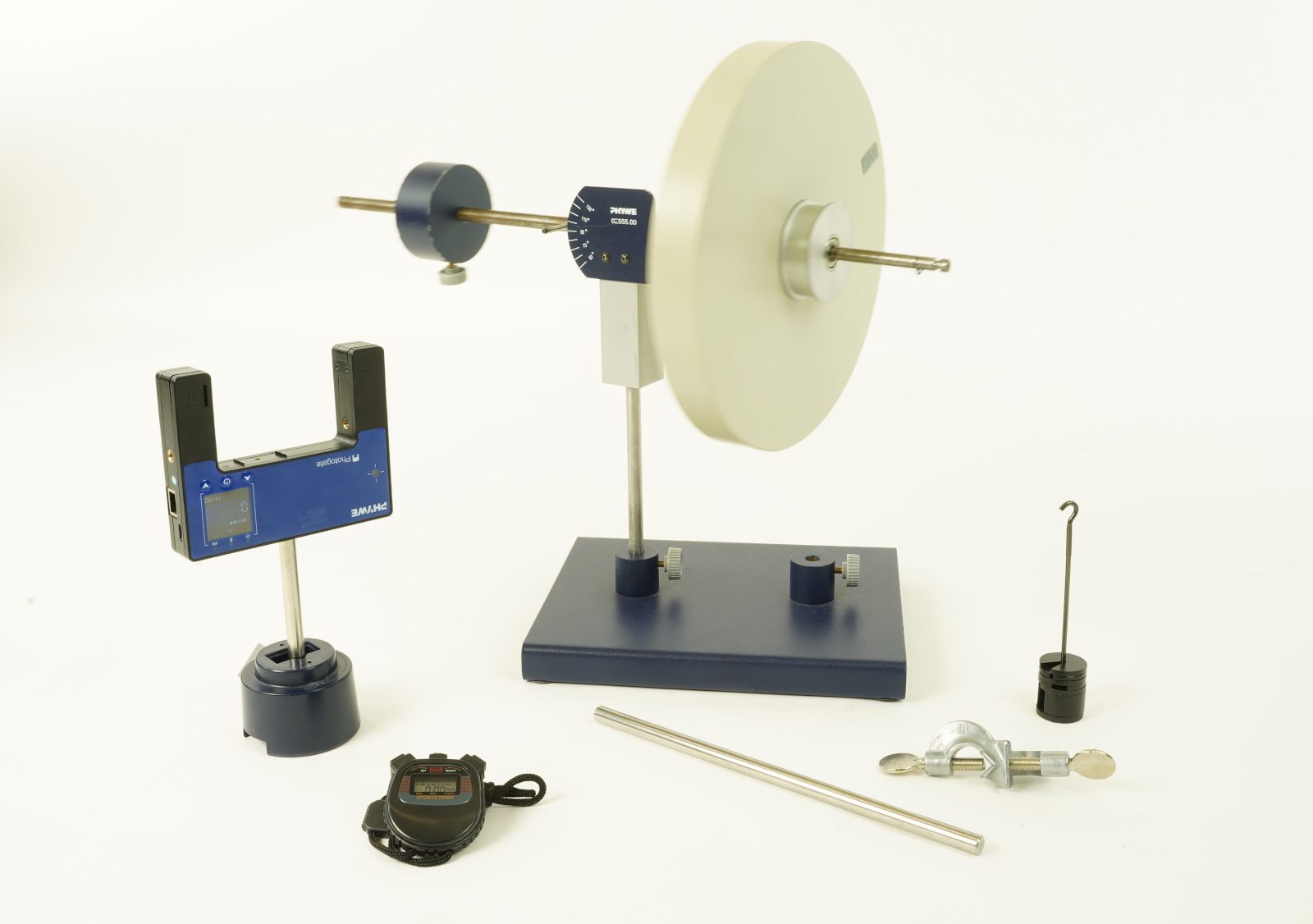Principle
The momentum of inertia of the gyroscope is investigated by measuring the angular acceleration caused by torques of different known values. In this experiment, two of the axes of the gyroscope are fixed. The relationship between the precession frequency and the gyro-frequency of the gyroscope with 3 free axes is examined for torques of different values applied to the axis of rotation. If the axis of rotation of the force free gyroscope is slightly displaced, a nutation is induced. The nutation frequency will be investigated as a function of gyro frequency.
Benefits
- Long-lasting motion due to low friction
- Slow rotation allows a comfortable measurement
- Quickly establish equilibrium with the easy to adjust counterweight
- Adjust the torque by adding additional weights
Tasks
- Determination of the momentum of inertia of the gyroscope by measurement of the angular acceleration.
- Determination of the momentum of inertia by measurement of the gyro-frequency and precession frequency.
- Investigation of the relationship between precession and gyro-frequency and its dependence from torque.
- Investigation of the relationship between nutation frequency and gyro-frequency.
Learning objectives
- Momentum of inertia
- Torque
- Angular momentum
- Precession
- Nutation

